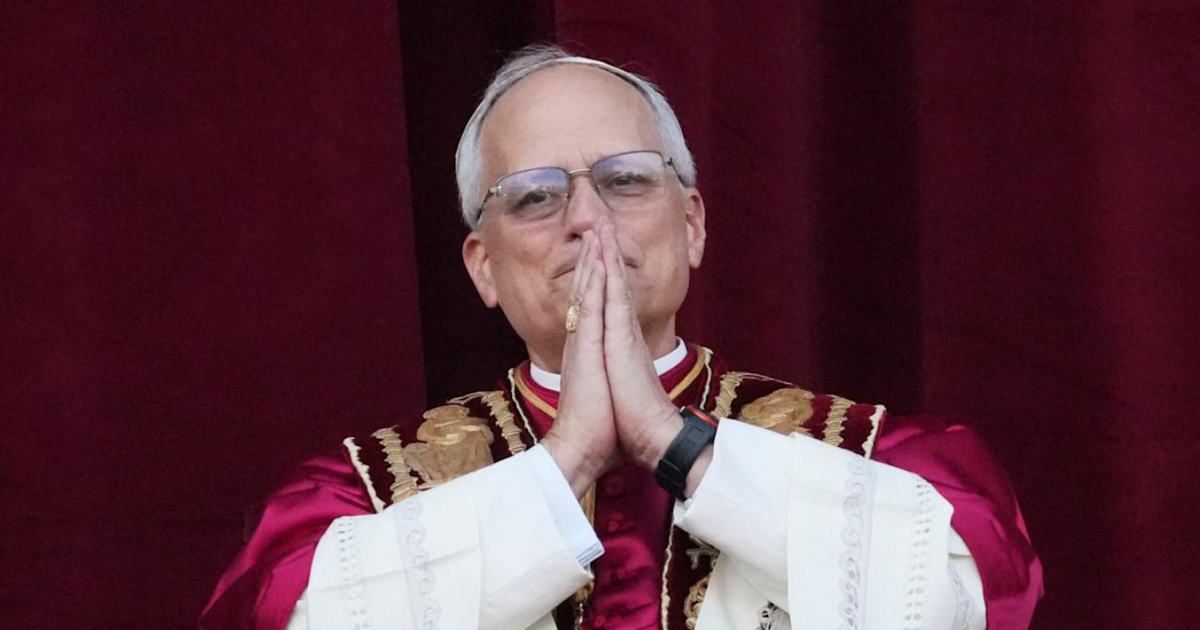
On only the second day of their conclave to elect a new pope, the College of Cardinals on Thursday sent a message of white smoke over the Vatican signaling to 1.4 billion Catholics around the world that a new leader of the Church had been chosen.
An hour later, American bishop Robert Francis Prevost, 69, was announced as the new pontiff. He takes the name Pope Leo XIV.
Related
Pope Francis’ record on LGBTQ+ issues were always mixed at best
The Pope’s welcoming messages were often contradicted by himself and by other Church statements.
Minutes later, looking at once both humbled and confident in his appearance on a balcony over St. Peter’s Square, Pope Leo spoke in Italian and Spanish to the tens of thousands assembled to welcome him. He first paid homage to Pope Francis for his dedication and service.
Never Miss a Beat
Subscribe to our newsletter to stay ahead of the latest LGBTQ+ political news and insights.
Subscribe to our Newsletter today
During his predecessor’s most recent hospitalization, Prevost presided over the Rosary for Pope Francis’s health in Saint Peter’s Square on March 3.
Echoing the inclusive message of Francis, Pope Leo said the mission of the Church is “to receive everyone, to welcome everyone in charity and love.”
The church should be a missionary institution, he said.
Like Francis, Pope Leo has roots in Latin America. He served in Peru as a missionary from 1985 to 1986 and from 1988 to 1998 as a parish pastor, diocesan official, seminary teacher and administrator. He was made a cardinal by Francis in 2023.
In October 2013, he returned to his Augustinian Province in Chicago, serving as director of formation at the Saint Augustine Convent.
Leo was appointed by Francis in 2023 to run the Vatican office that selects and manages bishops globally.
He is the second pope after Francis to hail from the Americas.
The choice of an American pope was surprising to Vatican watchers, who cited objections among some college cardinals to a single country wielding so much global influence.
In a post to his Truth Social platform, President Donald Trump congratulated Leo and said, “It is such an honor to realize he will be the first American pope.”
While Pope Francis moved the Church’s relationship with LGBTQ+ people forward, asking early in his tenure, “Who am I to judge?” his successor has indicated he may not be as welcoming.
As a bishop in Peru, Prevost opposed a government plan for teaching about gender in schools. “The promotion of gender ideology is confusing, because it seeks to create genders that don’t exist,” he told local news media.
Prevost has also earned criticism over priests accused of sexual abuse.
In Chicago, activists say his office did not warn a Catholic school of a priest who church leaders said abused young boys for years. In 2000, the priest was removed from public duties to a monastery, a decision that would have required Prevost’s approval.
In a 2012 address to bishops reported by The New York Times, Prevost lamented that Western news media and popular culture fostered “sympathy for beliefs and practices that are at odds with the gospel.” He cited the “homosexual lifestyle” and “alternative families comprised of same-sex partners and their adopted children.”
“We pray that in the 13 years that have passed,12 of which were under the papacy of Pope Francis, that his heart and mind have developed more progressively on LGBTQ+ issues, and we will take a wait-and-see attitude to see if that has happened,” said Francis DeBernardo, executive director of New Ways Ministry, a Catholic LGBTQ+ ministry.
In his role managing bishops, Prevost was instrumental in Pope Francis’ decision in 2023 to dismiss Bishop Joseph Strickland of Texas, who railed against the Pope’s inclusive message to LGBTQ+ people, and objected to his liberal views on divorce and the role of women in the church.
Subscribe to the LGBTQ Nation newsletter and be the first to know about the latest headlines shaping LGBTQ+ communities worldwide.